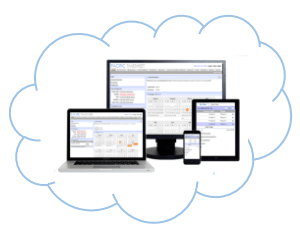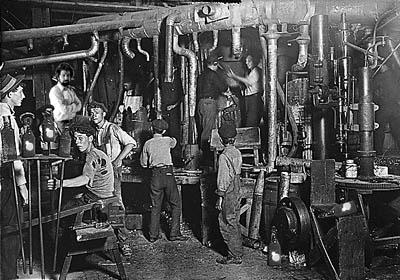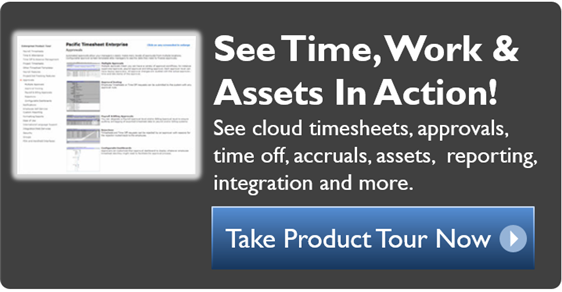 Paying people wages for the work they do is a relatively new concept, historically speaking. Six thousand years ago, slaves fed the animals, plowed the fields and cleaned the house. If a nobleman needed more slaves, enslaved their people. No one needed timesheets because no one got paid.
Paying people wages for the work they do is a relatively new concept, historically speaking. Six thousand years ago, slaves fed the animals, plowed the fields and cleaned the house. If a nobleman needed more slaves, enslaved their people. No one needed timesheets because no one got paid.
How many slaves contributed the labor that created the modern world? This chart shows the approximate breakdown of the slave population over time.
How many slaves contributed the labor that created the modern world? This chart shows the approximate breakdown of the slave population over time.
|
Year |
Region |
Free Citizens/ |
Slaves |
|
2000 BC |
200,000 |
100,000 |
|
|
10 AD |
55,00,000 |
10,000,000 |
|
|
500 AD |
1,000,000 |
100,000 |
|
|
1600 AD |
9,000,000 |
963,000 |
|
|
1860 AD |
27,400,000 |
4,900,000 |
Indentured servitude
Slavery was sometimes disguised as indentured servitude -- work performed without pay by immigrants. Indentured servants worked without wages for a pre-agreed period, usually five years, to pay the cost of their travel to the United States from Europe. Unfortunately for these workers, only about 40 percent of them lived long enough to pay off their debt. Women in particular had a hard time paying off their servitude, with heavy-handed employers who expected sexual favors from their workers but added years of service to a worker's debt as a penalty for getting pregnant.
In the agricultural economy of the southern United States, plantation owners tracked how much land their slaves could clear, how many shirts they could sew or how many fields they could harvest. There was no need to mark how many hours a slave worked. Planters provided food and shelter for the slave work force, not wages. There were no breaks or vacation days to monitor.
Industrial Revolution
By contrast, while Southern planters were using slaves as farm workers, an industrial revolution using paid labor was under way in the northern states, expanding the U.S.. economy. Shift workers made apparel, laid bricks and smelted steel. Workers' hours were tediously recorded on paper time cards and ledger books. These ledgers enabled employers to calculate their workers' weekly wages.
History of Overtime
Before companies paid workers by the hour, they paid by daily shift. In the late 1700s, carpenters went on strike to make a ten-hour shift the norm. Labor unions in the late 1800s decreed that an eight-hour shift constituted “a legal day’s labor,” and in 1914, auto workers were paid $5 for an eight-hour shift. Shift rates were used to calculate the hourly wage.
During the Great Depression, workers who were happy just to have a job endured longer shifts for lower pay. The federal government created overtime pay as an incentive for companies to spread the work they had among more workers to reduce unemployment and stimulate the economy. The Fair Labor Standards Act of 1938 formalized the incentive, establishing a minimum wage of 25 cents an hour, a maximum work week of 44 hours per week and premium pay for overtime. Faced with penalties if they violated the new law, companies closely tracked workers' hours as proof of their compiance.
 Efficiency experts
Efficiency experts
In Northern ports and cities, assembly lines, automation and machinery promised unparalleled productivity levels. Factories, construction sites and offices used early technology to accomplish virtually every task. In the early 20th century, efficiency experts arrived on the scene with stopwatches and notepads. They measured virtually every step a worker took, every movement he made, and recommended changes designed to eliminate wasted time and energy and to maximize a worker's hourly output.
Automated timekeeping
Mechanical time clocks soon overtook pen and paper as the easiest way to keep track of workers' hourly attendance. Each employee had a personalized rectangular time card. At the beginning of a work shift, she inserted her card in a time recording machine that printed the time on her time card. She "clocked out" for breaks and lunch periods, clocked back in when she returned to work, and clocked out again at the end of the day.
Hundreds of workers could clock in for work in the course of a few moments, and employers could track an employee's attendance down to the second. Payroll managers no longer had to read handwritten ledgers, decipher smeared-ink entries or bicker with workers who claimed the timekeeper hadn't seen them come in for the shift. Payroll used the endless printed rows of time stamps to accurately calculate wages.
Electronic timesheets
Companies used mechanical timekeeping systems for decades. However, the prevalence of computers in the late 20th century offered employers a new way to keep track of their employees' time. Using electronic timesheets, an employer could use an employee's electronic time entry to calculate more than payroll. A single time entry could automatically be used to calculate tax withholding and benefit entitlements. The computer could compare a worker's schedule to his hours worked and determine instantly if he missed a minute of his shift.
 Time and attendance in the cloud
Time and attendance in the cloud
The unreliability of the personal computer and the emergence of innovative technologies has led to the downfall of traditional electronic timesheets. A crashed payroll server could result in lost data and delayed payroll administration. Instead of storing time records on a hard drive and copying them on network servers or backup tapes, innovative companies are moving their time and attendance systems to the cloud.
Cloud solutions can be accessed by logging in through virtually any Internet browser. Cloud service providers manage the process of mirroring and backing up data, and cloud software solutions manage work crew schedules, keep track of benefits earned, calculate payroll taxes and vacation time and deposit an employee's wages directly into her bank account at 12:01 a.m. on payday with precision that would astonish the efficiency experts of the 1890s.
Pacific Timesheet offers several modern cloud-based timesheet solutions including time and attendance, payroll timesheets, project timesheets, time off and absence management, construction and fields time, work and asset tracking.
Tell us what you think. What will be the next trend in employee time tracking?





